How to make a hood in a private house: technical requirements and an overview of installation rules
Plastic windows, armored doors, on the one hand, keep the desired temperature in the rooms, and on the other - cause problems with air exchange. A properly designed hood in a private house will relieve the feeling of musty and the formation of condensate. In most cases, this is the only way to create a healthy microclimate in it.
We suggest that you familiarize yourself with the options for exhaust devices that can improve the microclimate. Together with you, we analyze the production of calculations using a specific example. We have described in detail the process of installing a forced type of hood for those who wish to do the installation themselves.
The information provided is based on regulatory requirements. The information is supplemented by illustrations, step-by-step photo guides, diagrams, tables and videos.
The content of the article:
Options for extracting in a private house
Both in public buildings and in private homes, different types of ventilation systems are used. They differ in purpose, in the way of activating the air flow and advancing the air masses. Ventilation systemdesigned to supply clean air to the house is called a supply air.
The design, the function of which is to remove the exhaust air outside the premises, is called exhaust. A special mission is performed by ventilation with recirculation. In this case, a part of the air discharged from the room is mixed with external cold air masses with further heating of this mixture to the set temperature and its return to the room.

The movement of air occurs as a result of processes occurring naturally due to the displacement by cold air, which has a greater volumetric weight, of heated air with a lighter weight from the room.
The flow in such a system moves at a low speed, since the weight of the warm and cold mass differs by a small amount. Air duct ventilation with a natural motivation is irrational to use if its horizontal length exceeds 8 m.
More effective is a system with artificial activation of air flow, provided by the fans. Air ducts in this case are long and can pass through several rooms. Elements of the system are most often placed in the attic. This option is justified for buildings of large area.
There is a division into channel and non-channel systems. In the first case, the air moves through the channels and ducts, in the second - there is no organized movement of air. In this case, window transoms, doors have to be opened. Natural ventilation creates more comfortable conditions for the residents of the house.
Necessary preliminary calculations
The initial parameter in the calculation is the volume of air discharged and supplied to the room. There is not one technique, but in the most used, sanitary standards and the area of the room are taken as a basis.
According to the requirement of the first, it is necessary to build on the fact that the need for air in m3/ h for one person spending most of the time in the house, depends on the purpose of the room:
- living room - 40;
- bedroom - 20;
- kitchen - 60;
- Bathroom - 25.
Based on the second criterion, we proceed from the following regulatory requirement: 3 m² per 1 m² of living space3 replaced air. At air duct cross section are guided by the fact that the optimal value of air velocity in the central channel is 5 m / s, and in the side channel - a maximum of 3 m / s.
You can independently determine the diameter of the pipe by the formula:
S = L / 3600 / v,
where L is the performance measured in m3/ h, v - air speed in m / s.
Data on air consumption depending on the cross section of the duct are summarized in the table.
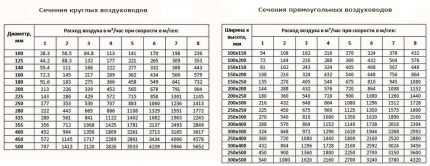
Air ducts are made of metal, plastic, aluminum foil, polyester.The last two relate to flexible systems. Their noise and heat insulation characteristics are good and they are the best suited for a private house.
Natural air exchange in the house
Natural air exchange is based on the property of gaseous and part of liquid substances with a higher temperature rising up. Thus, the exhaust air is naturally removed from the room through a vertically located exhaust channel, while simultaneously tightening the outside air through the supply ducts.

Excessive ventilation is indicated by excess moisture in the room during cold weather or increased dryness in the warm. The presence of a large amount of dust, a lack of oxygen - these are also signs of insufficient airflow from outside.
The consequence of poor drawing is fungus formation under the wallpaper, in the bathroom, soot settling on the kitchen walls, foggy windows.
Checking the operation of the hood is easy. It is enough to bring a sheet of paper to the ventilation grid. With good traction, it will bend towards the ventilation duct, otherwise nothing will happen. It should be concluded that the hood is clogged with something and the channel must be cleaned to ensure traction.
To provide a private house with good ventilation, you need to start with the calculation of air exchange. According to its results, the cross-section of the channels, the type of ventilation system are selected and a sketchy version of the ventilation scheme is made, where the places of passage of the air ducts and the installation of ventilation equipment, the points of intake and output of the air mass are indicated.
Private houses are mainly located outside the city, where the air, unlike the city, is cleaner and there is no need for additional cleaning. Therefore, natural ventilation for a private house is preferable.
A big obstacle to the intake of fresh air is the plastic windows, in which there are no gaps, and the glass is very tight to the frames.
Exit in the supply air valve installation. It is placed on the upper frame, so the air coming from the street goes under the ceiling and only after mixing with conventional flows and acquiring room temperature it goes down.
The location of the elements of the exhaust system should ensure the passage of air flow covering the entire house in the direction from the "clean" premises to those where the air is most susceptible to pollution.
According to this rule, in rooms with special conditions, which include boiler rooms, kitchens with a gas stove, cellars, rooms with fireplaces and columns, toilets, the presence of a hood is mandatory. Valves are also needed in these rooms.
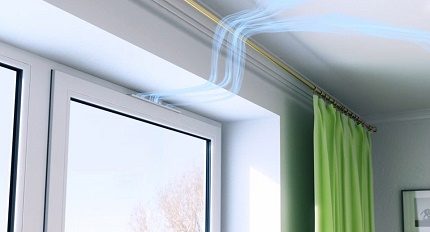
Exist vent valvesmounted on the wall. This pipe with a circular cross section is inserted into the through hole in the wall and closed with grilles both from the inside and from the outside.

The grill inside can be adjusted - open and close completely or partially. When installing, they prefer the place near the window. Sometimes the supply valve is mounted behind the radiator and then the incoming air is immediately heated.
Private house ventilation requirements
Sanitary standards put forward a number of requirements for aircraft. When deciding how to make an efficient hood in a private house, all points must be taken into account:
- The inner walls of the channels should be smooth. To ensure this condition, round or rectangular ducts of constant cross-section are inserted into them.
- The ventilation riser at the bottom is equipped with an inspection door. It should close tightly.
- An exhaust duct is led to the roof with a minimum of 1.5 m above it. If the roof has a broken shape, then in order to avoid the occurrence of reverse thrust caused by swirling flows, a deflector is installed in the exhaust channel.
- The ventilation shaft device. If no ventilation system was originally provided for in the building, an attached shaft is attached to one of the walls. To improve traction, it must be insulated.
- Compliance with the rules of ventilation. It is impossible to combine the mechanical hood of the kitchen with the general aircraft. A separate channel is arranged for her, otherwise there will be problems with the functioning of natural traction in other rooms of the house.
- The maximum permissible distance from the ceiling to the top of the ventilation grilles is 150 mm. As this distance increases, air stagnation zones will occur.
Doors separating adjacent rooms, even when closed, should not impede the flow of air.
The best solution is to purchase a door with a special decorative grille at the bottom. If a solid door is installed, a gap of at least 2 cm is left between the floor and the door leaf or a series of holes are drilled below.
The essence of the basic requirement is that the volume of air to be removed must be equal to the amount of incoming. If this rule is not observed, then various unpleasant odors will penetrate into the room with air. With a large imbalance between the volume of incoming air and the hood, drafts will appear.
Union ventilation with recirculation
Recirculation is called CB, when the air removed from the room is returned back through the influx with an admixture of fresh air. The disadvantage is that its use is limited by SNiP, and in regions with a cold climate it does not work very effectively. Its action is limited to one room.
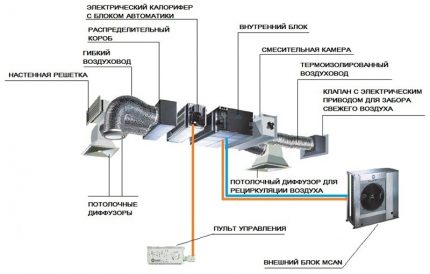
The circuit of the recirculation system can be turned into an ordinary supply and exhaust ventilation by closing the recirculation valve and completely opening the supply and exhaust. If you do the opposite, the system begins to drive air in a circle.
When the supply and exhaust valves are only partially opened, mixing of fresh outdoor air will begin. By adjusting the degree of opening, optimize the flow of elements that provide a comfortable life.
Installation of forced extraction of a private house
Forced air exchange in comparison with natural wins in many respects:
- It works regardless of the weather.
- It cleans the air more effectively.
- It is possible to adjust the rotation speed and fan power.
- The air flow can be set in motion not only with a duct fan, but also through the use of monoblocks, which are easy to install.
The main disadvantages are the dependence on power supply and the need for periodic replacement of individual elements. There are several mechanisms for forced ventilation.
It can be a single supply and exhaust installation, a typeset and supply system, exhaust, duct air conditioning. The most efficient is considered to be supply and exhaust fan. The design includes a fan, automation, sensors, filters.

Forced hood as standard has a single fan and is designed for small rooms. In NE type-setting equipment is the same, but it is placed separately. System power is in the range of 80-7,000 m3/ h
From the practical recommendations of experienced craftsmen it follows that in a small house consisting of 2 rooms, an extract hood that processes from 200 to 300 m works effectively3 air per hour.
In buildings of large area, it is necessary to mount hoods with a capacity of 350 to 500 m3/ h
Kitchen hood mounting technology
The hood in the kitchen is usually placed above the stove. It is necessary that the exhaust umbrella protrudes beyond the plate by 100-150 mm.
Productivity is selected with an orientation to the parameters of the premises using the formula:
P = S x H x 12
Where the first symbol indicates the power of the second - the third area - the height of the kitchen.
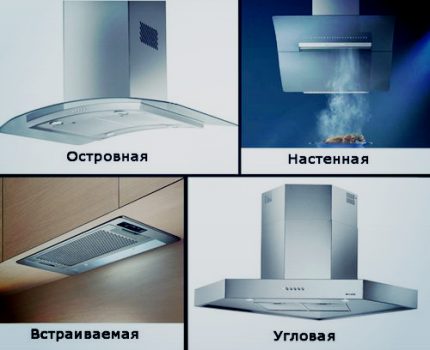
Air ducts usually go along an indirect path, due to which the exhaust power may decrease. To guarantee, 30% is added to the value obtained as a result of the calculation. The installation technology is simple therefore, having understood the scheme, you can do all the work yourself.
When there is no built-in aircraft. then first make a hole in the wall, matching in diameter with the cross section of the exhaust pipe. If you neglect this recommendation, the operation will be accompanied by increased noise, and air will exit at a lower speed.
The structure itself is located at a distance of at least 0.7 m from the surface of the electric stove and 0.8 m from the gas.
The next step is the marking of the mount. Sometimes a template is included in the hood kit, but if it doesn’t turn out, you can use the level and tape measure. Next, fix the exhaust umbrella, observing the horizontal.
Connect the structure to a previously made outlet, connect to the mains and test. If the house has a geyser, then the ventilation pipe can be led into the chimney of the boiler or heating furnace.
The process of installing a cooker hood with a masking dome will be demonstrated by the following photo selection:
Forced bathroom exhaust hood of a private house
In the bathroom for forced ventilation, the installation of exhaust fans operating in a humid environment is performed:
- bring power to the room and install the outlet;
- a hole is made in the wall corresponding to the section of the fan clutch;
- the sleeve is placed in the hole;
- drill mounting holes;
- connect the cable;
- removing the front panel from the fan, fasten the latter to the wall;
- return the removed panel to its place;
- outside fasten a lattice.
It is advisable to use such a system in a bathroom located on the second floor. Typically, the CB of this room with the mandatory presence of a ventilation shaft is laid in the project. The air flow through the gap between the floor and the door, as well as through the window.
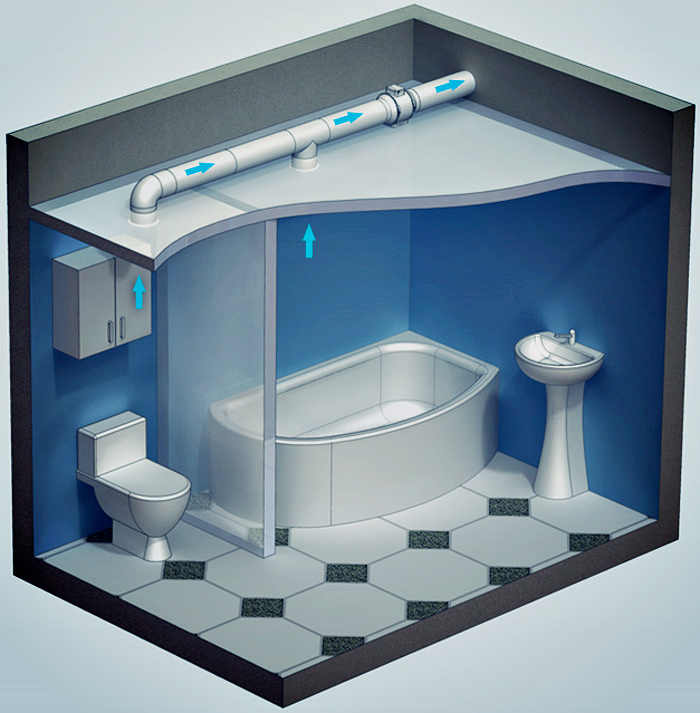
Sometimes, as an option to resolve the issue of how to make an outlet in the combined bathroom of a private house, something similar to a drainpipe with a recommended diameter of 110 mm protruding above the roof level is carried out along the wall of the building.
In device ventilation of hygienic premises axial fans are used, the installation of which is performed in the standard sequence:
Basement ventilation device
For basement simple and effective ventilation is needed, otherwise it will not meet the demands of it. For installation, 2 pipes with a section from 80 to 150 mm, thermal insulation, protective visors, grilles are needed.
The supply pipe is mounted at one end into the wall, retreating from the floor for about 0.3 m. The top of the pipe with a length of approximately 5.5 m should run along the outer wall. The draft is ensured by the temperature difference in the upper and lower parts of the pipe.
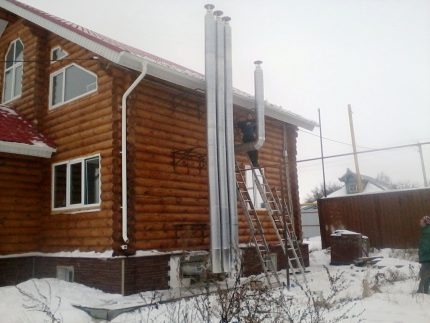
The top of the pipes is protected by visors, which, in addition to the protective function, play an important role in regulating the speed of air passage.
The draft intensity also depends on the difference in the lengths of the supply and exhaust pipes. The larger this difference, the more powerful the flow. Normal ventilation should provide a 2-fold air change within 60 minutes.
Conclusions and useful video on the topic
Video # 1. How to implement a ventilation project in accordance with all the rules:
Video # 2. Familiarization with the work of natural ventilation:
Numerous factors influence the ventilation efficiency of your own home. When choosing the type of aircraft and performing calculations, you need to consider everything. Only when this condition is met will it function flawlessly.
Please write comments in the block form open below the text. We are waiting for your stories about the design and use of exhaust systems. Here you can ask questions and point out the shortcomings if you find them in the information provided for familiarization.

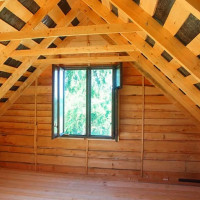 Attic ventilation in a private house: how to make ventilation through gables and dormers
Attic ventilation in a private house: how to make ventilation through gables and dormers 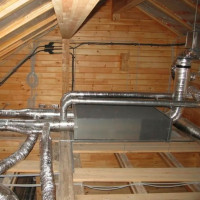 Is it possible to bring ventilation to the attic in a private house? The best accommodation options
Is it possible to bring ventilation to the attic in a private house? The best accommodation options  Ventilation in a private house: supply and exhaust systems + tips for arranging
Ventilation in a private house: supply and exhaust systems + tips for arranging 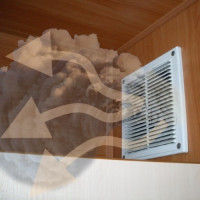 Return draft ventilation in a private house: common causes and their elimination
Return draft ventilation in a private house: common causes and their elimination 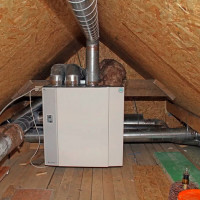 Ventilation in a two-story private house: options for organizing trouble-free air exchange
Ventilation in a two-story private house: options for organizing trouble-free air exchange 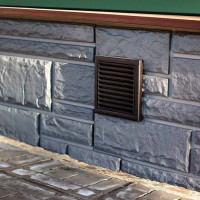 Natural ventilation in a private house: rules for arranging a gravitational air exchange system
Natural ventilation in a private house: rules for arranging a gravitational air exchange system  How much does it cost to connect gas to a private house: the price of organizing gas supply
How much does it cost to connect gas to a private house: the price of organizing gas supply  The best washing machines with dryer: model rating and customer tips
The best washing machines with dryer: model rating and customer tips  What is the color temperature of light and the nuances of choosing the temperature of the lamps to suit your needs
What is the color temperature of light and the nuances of choosing the temperature of the lamps to suit your needs  Replacement of a geyser in an apartment: replacement paperwork + basic norms and requirements
Replacement of a geyser in an apartment: replacement paperwork + basic norms and requirements
He built himself a summer house, faced with the problem of air ventilation in it. At first, it was just damp and musty in the rooms, and then the fungus began to appear. Such unpleasant little black dots on the wallpaper. This forced to act promptly in terms of the construction of the hood. He opted for a forced ventilation system. The advantages are obvious - there is no dependence on temperature fluctuations in the street, it is possible to regulate the volume of air circulation. I was satisfied, I do not see any cons.
At first glance, the construction of a ventilation system is a rather complicated and expensive process. Can the installation of conventional air conditioners in the rooms replace a complete ventilation system? I am an amateur in this topic, but at first glance it seems that air conditioners also give a large influx of air. Or air conditioners can also be attributed to a forced ventilation system?
Hello. Air conditioning is the process of cooling or heating air masses in a room. That is, creating a comfortable or necessary microclimate (for example, in a retail and grocery room). Ventilation is a system that allows you to remove the exhaust air from the room and provide an influx of fresh air saturated with oxygen.
There are air conditioners that indicate “with ventilation function”. But this only means that the device has a conventional built-in fan. Also on the market appeared models of air conditioners, supposedly having an integrated ventilation system. However, one should not deceive oneself - the air flow in these devices is too small to provide high-quality ventilation, and besides, they also emit very loud noise during operation.
Those. there is air flow from the air conditioner - this is a fact, but its volumes are such that it cannot be used as fresh air ventilation. Do not fall for the tricks of marketers and sellers. However, there are supply and treatment complexes, which are now not only used in production, but also for domestic purposes.
For example, the Ballu BMAC-200 Base air handling unit, which provides an inflow of fresh purified air into the room, has a maximum capacity of 200 m3 / hour of fresh air. This is the best solution for forced ventilation, where clean air is needed in the room. Now many residents of megacities are installing such complexes in order to clean the air of harmful automobile emissions and industrial pollution. The equipment looks as follows (I attach the photo), after installation it fits perfectly into the overall interior.
Household air conditioning does not give air flow at all 🙂
Is it straight at all, a completely zero indicator? Are you sure about that?
Hello. Have you heard anything about ducted air conditioners? 🙂
Air conditioners are different, Dmitry. A number of models provide for inflow.
I will give examples:
- Hitachi launches inverter Air Exchanger equipped with a hose through which fresh air is transported, cleaned by a Nano Titanium filter. It also offers RAS-JH5 hybrid air-conditioning ventilation;
– Daikin launches the Ururu Sarara series, equipped with a fresh purified air supply unit. Some models refresh the air in a couple of hours.
The price of such air conditioners starts from ₽50000. Of course, preference should be given to channel air conditioners with fresh air - they will provide stable air exchange.